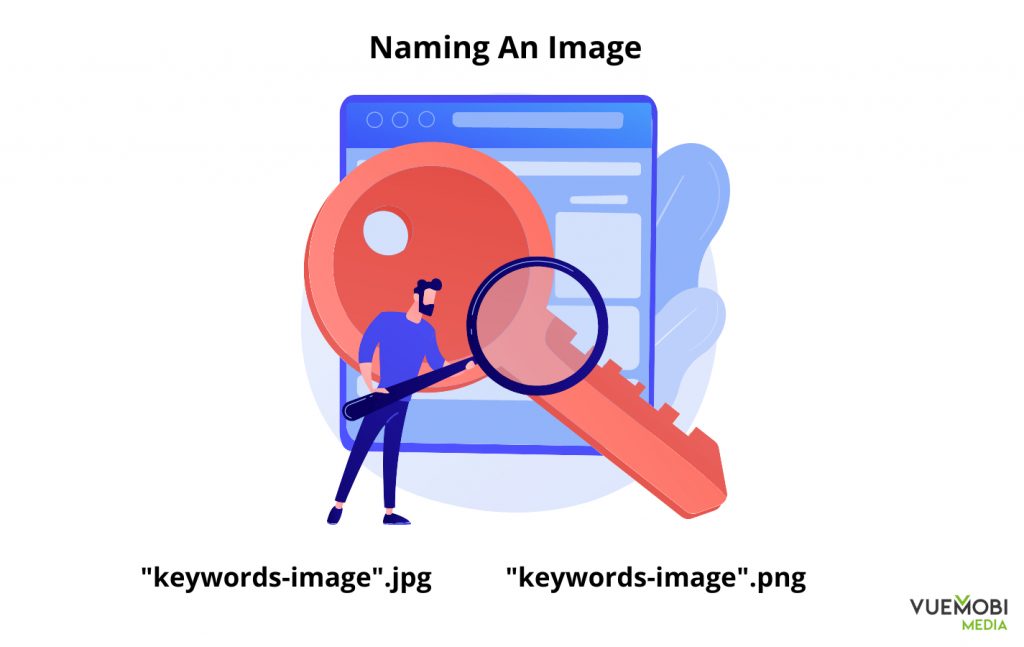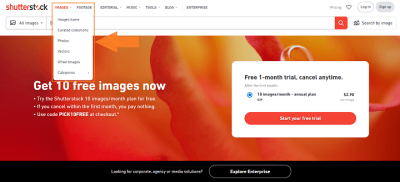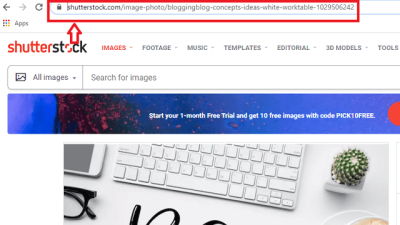If you’ve ever uploaded photos to Shutterstock, you know how crucial it is to get those tags just right. Proper tagging isn’t just about adding a few keywords—it’s about making sure your images stand out and are easily discoverable by potential buyers. Think of tags as the clues that help Search algorithms understand what your photo is all about. The better your tags, the higher the chances your images will appear in relevant searches, leading to more downloads and earnings. So, mastering the art of tagging can really boost your success on Shutterstock!
Understanding How Shutterstock Search Works

Getting a grasp on how Shutterstock‘s search engine works is key to optimizing your photo tags effectively. When someone types a search term, Shutterstock‘s system sifts through its vast database to find images that match the keywords. But it’s not just about matching words—it’s about relevance and context. The platform uses algorithms that consider various factors like:
- Tag Relevance: How closely your tags match the search query.
- Keyword Placement: Tags placed in the right metadata fields are prioritized.
- Image Quality & Popularity: High-quality, popular images tend to rank higher.
- Search Trends: Current trending topics can influence search results.
Additionally, Shutterstock recognizes synonyms and related terms, so it’s smart to include a variety of keywords that describe your image from different angles. For example, if you upload a photo of a “sunset over mountains,” including tags like “dusk,” “peak,” “nature,” or “scenery” can help broaden the image’s reach. Keep in mind that overstuffing your tags with irrelevant keywords can hurt your search rankings, so focus on accurate, descriptive tags that truly represent your image. Understanding this process helps you craft smarter tags that align with how Shutterstock‘s search engine operates, making it easier for your photos to get found by the right audiences.
Best Practices for Tagging Your Shutterstock Photos

Tagging your Shutterstock photos effectively can make a huge difference in how easily your images are found by potential buyers. It’s not just about adding a bunch of keywords; it’s about choosing the right ones that truly describe your photo and match what people might search for. Here are some best practices to help you get it right:
Use Specific and Relevant Keywords
Think about what makes your photo unique. Instead of generic tags like “nature” or “people,” add more specific keywords such as “sunset over mountains” or “happy family picnic.” Specific tags help your image stand out in search results and attract the right audience.
Research Popular Search Terms
Spend some time browsing Shutterstock and other stock sites to see what keywords are commonly used for similar images. Tools like Google Keyword Planner or even Shutterstock’s own search bar suggestions can give you ideas on what users are searching for.
Use a Mix of Broad and Niche Tags
Combine general tags like “business” or “technology” with niche tags like “remote work” or “cybersecurity.” This way, your photo can be discovered by both broad searches and specific queries, increasing its visibility.
Keep Tags Relevant and Accurate
Only include tags that truly describe your image. Misleading tags might get your image flagged or rejected, and it won’t help you reach the right audience. Accuracy is key to building trust and ensuring your images are discoverable by the right buyers.
Use All Available Tag Slots Wisely
Shutterstock allows a certain number of tags per image—make sure to utilize all of them. However, avoid keyword stuffing. Focus on quality over quantity, ensuring each tag adds value and relevance.
Include Synonyms and Variations
People search using different words. For example, if your photo features a “car,” consider also adding tags like “automobile,” “vehicle,” or “sedan” if relevant. This broadens the reach of your image in search results.
Common Mistakes to Avoid When Tagging Images
While tagging can significantly boost your images’ visibility, it’s easy to fall into some common traps that hurt your chances of success. Here are some mistakes to watch out for—and how to avoid them:
Overloading with Irrelevant Tags
It might seem tempting to add as many tags as possible, but stuffing your image with unrelated keywords can backfire. Search engines and Shutterstock’s algorithms are designed to favor relevant, well-thought-out tags. Keep your tags focused and pertinent.
Using Misspelled or Incorrect Terms
Typos or incorrect labels can make your image harder to find. Double-check your tags for accuracy. If you’re unsure about a term, look it up or see how similar images are tagged.
Repeating the Same Tags in Different Variations
Using “car,” “cars,” and “automobile” separately doesn’t add much value if they all mean the same thing. Instead, pick the most relevant variation and use it strategically. Avoid redundancy to keep your tags clean and effective.
Ignoring the Audience and Search Intent
Think about what your target buyers are searching for. If your image is of a “cozy coffee shop,” tags like “cafe,” “coffee,” “cozy,” and “interior design” are helpful. Avoid generic tags that don’t reflect the image’s main theme, as they dilute your image’s searchability.
Not Updating Tags When Needed
Trends change, and popular search terms evolve. Review your existing tags periodically and update them if you notice new keywords gaining popularity or if your image’s context shifts over time.
Ignoring Shutterstock’s Tagging Guidelines
Each platform has rules about what can and cannot be included. Make sure your tags comply with Shutterstock’s policies to avoid rejection or penalties. For example, avoid including promotional language or irrelevant personal info.
By steering clear of these common mistakes and following best practices, you’ll give your Shutterstock photos the best shot at being discovered. Remember, effective tagging is an ongoing process—keep refining your approach, stay updated on trends, and your images will perform better over time!
Using Relevant Keywords to Enhance Photo Visibility
When it comes to making your Shutterstock photos easier to find, using the right keywords is absolutely essential. Think of keywords as the bridge between your images and the users searching for them. If your keywords are relevant and specific, your photos will have a much better chance of appearing in the right search results.
Start by brainstorming descriptive words that accurately depict your photo. For example, if you uploaded a picture of a mountain sunset, your keywords might include mountain, sunset, landscape, nature, outdoor, scenic, evening. The goal is to cover all the key elements in your image without overloading it with irrelevant terms.
Here are some tips for using keywords effectively:
- Be specific. Instead of just “flower,” use “red tulip” or “pink cherry blossom.” Specific keywords help target narrower searches, increasing your chances of being found by users looking for exactly what you offer.
- Use a mix of broad and niche keywords. Broad keywords like “food” are helpful, but niche keywords like “vegan avocado toast” can attract more targeted traffic.
- Include location-based keywords if relevant. For example, “Paris Eiffel Tower” or “Sydney Opera House” can help your photos appear in location-specific searches.
- Avoid keyword stuffing. While it’s tempting to add as many keywords as possible, overdoing it can look spammy and might even hurt your searchability. Focus on quality and relevance.
- Think like your audience. Consider what words someone might type when searching for your photo. Put yourself in their shoes!
Remember, the goal is to make your images as discoverable as possible without misleading or overwhelming potential viewers. Well-chosen, relevant keywords make a world of difference in boosting your photos’ visibility on Shutterstock.
Tools and Resources for Optimizing Your Tags
Feeling a bit overwhelmed with keyword ideas? Don’t worry—there are plenty of tools and resources out there to help you optimize your tags and improve your searchability on Shutterstock.
Here are some popular and useful options:
| Tool/Resource | What It Does | Benefits |
|---|---|---|
| Google Keyword Planner | Provides keyword ideas based on search volume and relevance. | Helps identify popular and trending keywords to include in your tags. |
| Ubersuggest | Offers keyword suggestions, search volume, and competition data. | Great for discovering niche keywords and long-tail phrases. |
| Keyword Tool.io | Generates keyword ideas for various platforms, including Google and YouTube. | Useful for expanding your keyword list beyond Shutterstock-specific suggestions. |
| Shutterstock’s Search Trends | Analyzes trending search terms directly on Shutterstock. | Ensures your tags align with what users are actively searching for right now. |
Using these tools, you can build a strong list of relevant, high-performing keywords. Remember, the key is to choose words that truly describe your image and match what your target audience is searching for.
Additionally, consider browsing Shutterstock’s own search bar and related searches to see what popular tags are associated with your image category. This can give you real-world insights into current trends and user preferences.
Finally, don’t forget to review your tags periodically. Trends evolve, and so should your keywords. Keep your tagging strategy fresh and aligned with current search behaviors, and you’ll see better visibility and more downloads over time.
How to Review and Update Tags for Better Search Performance
Now that you’ve spent time adding tags to your Shutterstock photos, it’s important to remember that the digital landscape is always changing. Trends evolve, keywords grow in popularity, and what once worked might not be as effective anymore. That’s why regularly reviewing and updating your tags is a smart move to keep your images visible and relevant.
So, how do you approach this review process? Here are some practical steps:
- Monitor your image performance: Use Shutterstock’s contributor dashboard to see which images are getting more views and downloads. If certain photos aren’t performing well, it might be time to revisit their tags.
- Research trending keywords: Check out popular search terms on Shutterstock and other stock photo sites. Tools like Google Trends or keyword research platforms can also give insights into what people are searching for.
- Update with relevant keywords: If you notice new trending terms or synonyms, incorporate them into your tags. For example, if “remote work” has become more popular than “home office,” consider adding or replacing tags accordingly.
- Remove outdated or irrelevant tags: Sometimes, tags that made sense initially might no longer be relevant or helpful. Removing them can improve your image’s search efficiency and prevent your photos from being shown in unrelated searches.
When updating tags, keep in mind these best practices:
- Be specific: Instead of generic words like “nature,” use more specific tags like “mountain landscape” or “forest trail.”
- Use varied keywords: Incorporate synonyms and related terms to broaden your reach.
- Stay within Shutterstock’s guidelines: Avoid keyword stuffing or misleading tags, as this can harm your reputation and search performance.
Remember, the goal of reviewing and updating your tags is to ensure your images are discoverable by the right audience. Regularly checking your analytics and staying current with trends will help you refine your tagging strategy and boost your earnings over time.
Conclusion and Final Tips for Effective Photo Tagging on Shutterstock
There you have it — a comprehensive guide to mastering the art of tagging your Shutterstock photos! Effective tagging isn’t just about filling in keywords; it’s about understanding your audience, being strategic, and staying adaptable.
Here are some final tips to keep in mind:
- Think like your customer: Put yourself in the shoes of someone searching for images. What words would they use? Use those keywords.
- Be specific and descriptive: The more precise your tags, the better your chances of appearing in relevant searches.
- Use a mix of broad and niche keywords: Broad terms attract a wide audience, while niche tags can help your images stand out in specialized searches.
- Leverage all available tags: Maximize the use of all keyword slots Shutterstock provides, but avoid redundancy.
- Review and update regularly: Keep your tags fresh and aligned with current trends and your image performance data.
Remember, effective tagging is an ongoing process. The more effort you put into refining your keywords, the more visibility your photos will gain, leading to increased downloads and income. Keep experimenting, stay informed about trends, and don’t be afraid to tweak your tags — your future earnings depend on it!


